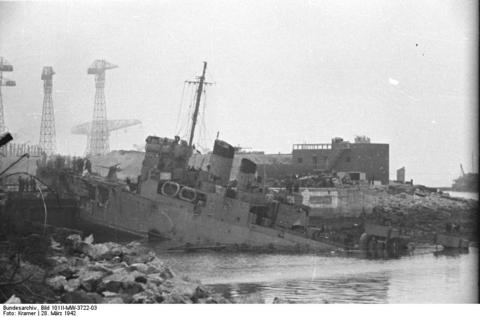The British Raid on St. Nazaire, France

The sweeping naval, air, and ground battles that define World War II continue to get the lion's share of our attention. However, the Second World War was also a war featuring a use of special forces on a scale almost unimaginable today. This war within the war was so unique it oftentimes was at odds with the reputation's earned by various nation's conventional forces.
For instance, the Italian military establishment's war effort has been much maligned, though the Italian Navy fought much better than it is often given credit for, but what is often forgotten is that Italian commandos achieved tremendous victories during the war. Similarly, British conventional efforts on the ground during the war are often panned, fairly in some cases and most certainly not in others, and yet British special forces proved among the best of the world's elite fighting men. Perhaps one of the best examples of this high standard of excellence came late in March 1942 in a raid at St. Nazaire in German occupied France.
In 1942 St. Nazaire was an important war time target for a number of reasons. Nevertheless, for the British perhaps the number one reason for its importance was the massive Normandie dry dock - the only German held dry dock on the Atlantic coast capable of handling Germany's largest warships. Located on the estuary of the Loire River this imposing dry dock was not only well protected, by rapid-fire dual use anti-aircraft weapons from the 22nd Naval Flak Brigade, the heavy artillery pieces of the 280th Naval Artillery Battalion, and local defensive ground units, but was also awkwardly located several miles up the Loire River. In addition, the 333rd German Infantry Division occupied the surrounding region, and thus could help in responding against any attack.
Nonetheless, in March 1942 a small fleet of motor boats and the obsolete destroyer HMS Campbeltown, formerly a US Navy destroyer - one of 50 transferred to Britain earlier in the war, carried a large force of British commandos and naval personnel up the Loire. There the Campbeltown, which had been packed with delayed charge explosives, was driven right into the Normandie dry dock (see picture) where it would explode and knock the dry dock out of service for the war's duration. At the same time the commandos further demolished the otherwise superb ship repair facilities at St. Nazaire. But the cost was severe - well over 350 British casualties and prisoners of war, including 169 dead, from the Royal Navy and Commando units involved.



Post new comment